Blue Dragon Sea Slug - Definition, Examples, Quiz, FAQ, Trivia
Discover the amazing floating dragon of the ocean!
What is a Blue Dragon Sea Slug?
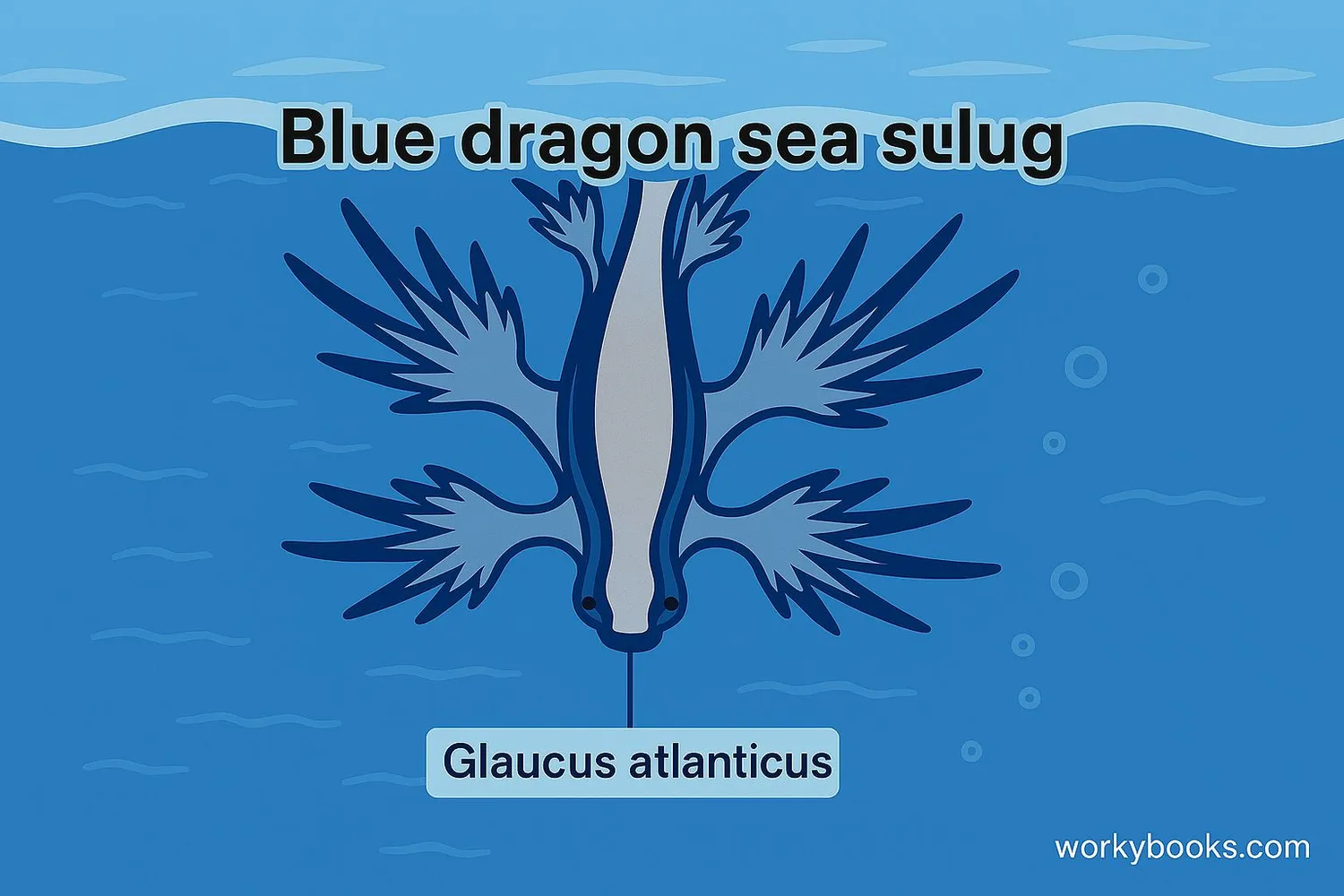
The blue dragon sea slug, scientifically known as Glaucus atlanticus, is a small but fascinating creature that lives in the ocean. Despite its name, it's not a mythical dragon but a type of sea slug!
These amazing creatures are only about 1-3 centimeters long, but they're known for their beautiful blue color and unique floating lifestyle. They spend their entire lives floating upside down on the ocean's surface, carried by ocean currents and winds.
Blue dragons are part of a group called nudibranchs (pronounced NEW-dih-bronks), which are soft-bodied marine mollusks. They're sometimes called "blue angels," "blue glaucus," or "sea swallows."
Scientific Name Fact!
The scientific name Glaucus atlanticus comes from Greek mythology - Glaucus was a sea god who was transformed into a merman after eating a magical herb!
Unique Appearance
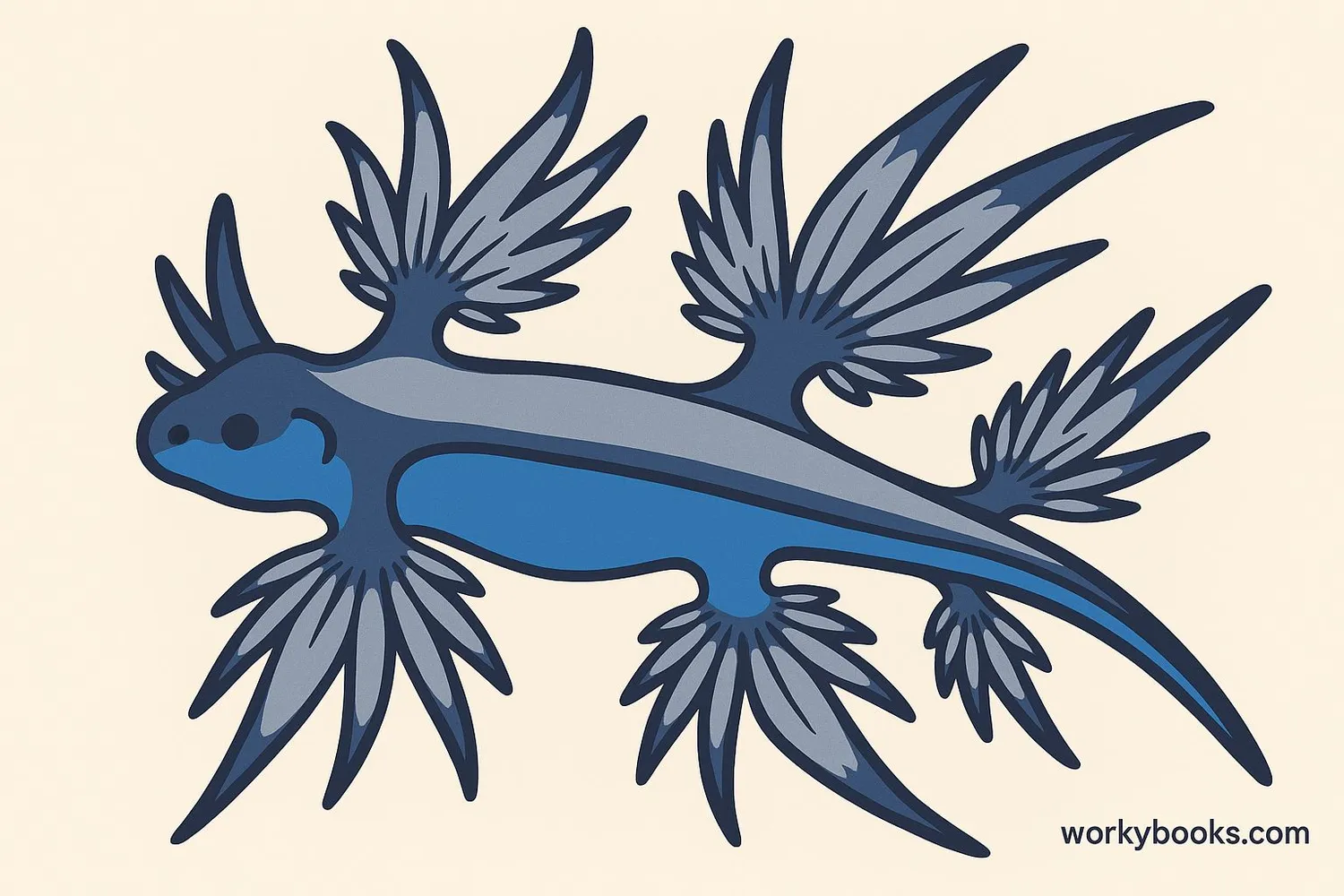
The blue dragon sea slug has one of the most unique appearances in the ocean world:
Color Pattern
Bright blue on their underside, silvery grey on their back
Appendages
Six finger-like structures that look like wings
Size
Usually 1-3 cm long (about the size of your thumbnail)
Body Shape
Flat, tapered body that helps them float
Camouflage
Blue blends with water, silver blends with sky
Their beautiful coloration isn't just for show - it's actually a form of camouflage! The blue on their underside helps them blend in with the ocean water when viewed from below, and the silvery color on their back helps them blend in with the bright sky when viewed from above. This protects them from predators swimming both above and below them.
Upside Down World!
Blue dragons spend their entire lives floating upside down! Their blue side actually faces upward toward the sky, while their silver side faces down toward the ocean depths.
Habitat
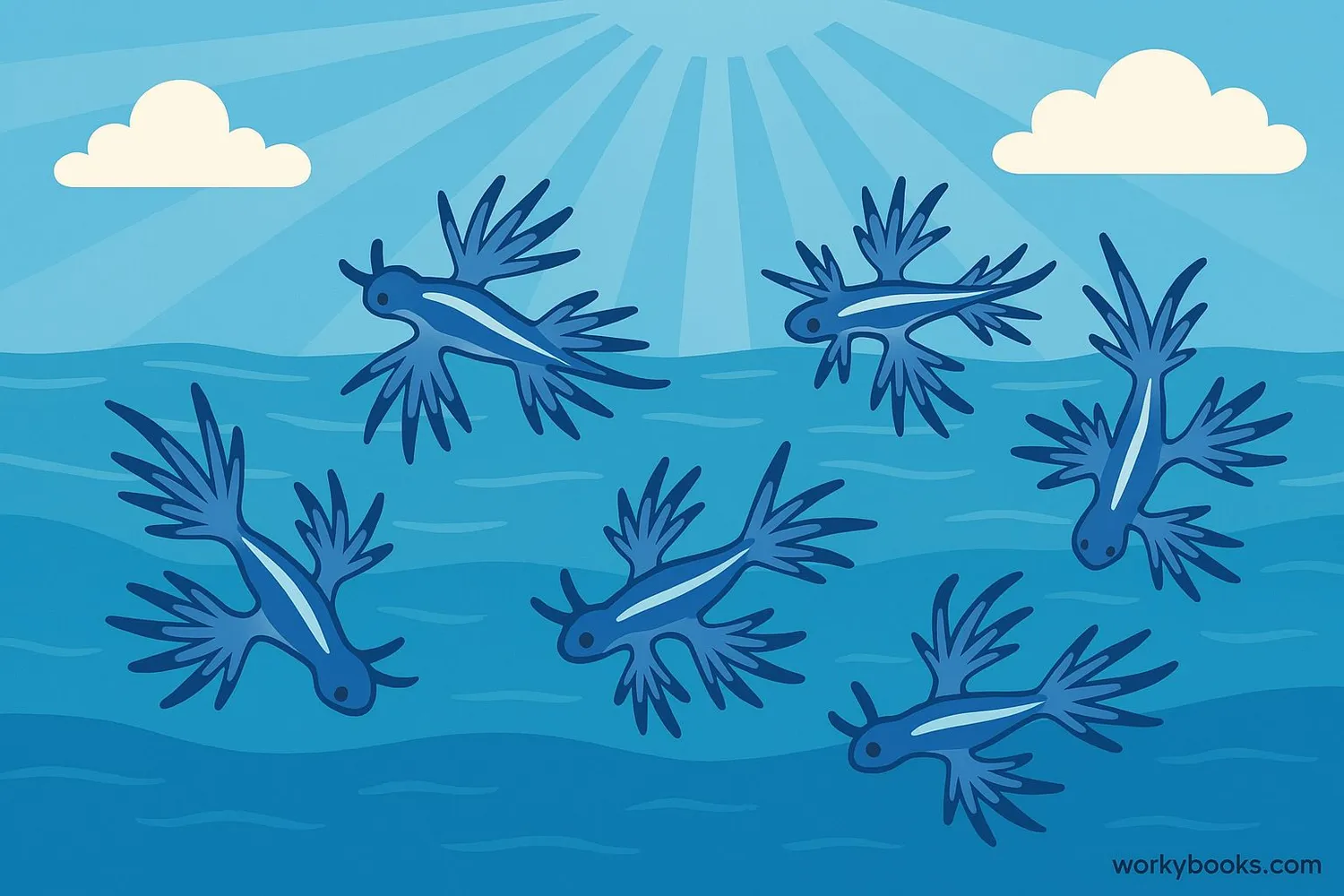
Blue dragon sea slugs live in a very specific part of the ocean:
Location
Temperate and tropical waters around the world
Floating Lifestyle
Live at the ocean surface, carried by winds and currents
Ocean Zones
Pelagic zone - the open ocean, not near shore
Blue dragons are found in oceans worldwide but are most common in temperate and tropical waters. They're rarely seen near shore except when strong winds blow them toward beaches.
These creatures are part of the "blue fleet" - a group of marine animals that float at the ocean surface, including the Portuguese man o' war, blue buttons, and by-the-wind sailors. They float using a gas-filled sac in their stomach and are completely at the mercy of ocean currents and winds.
Diet
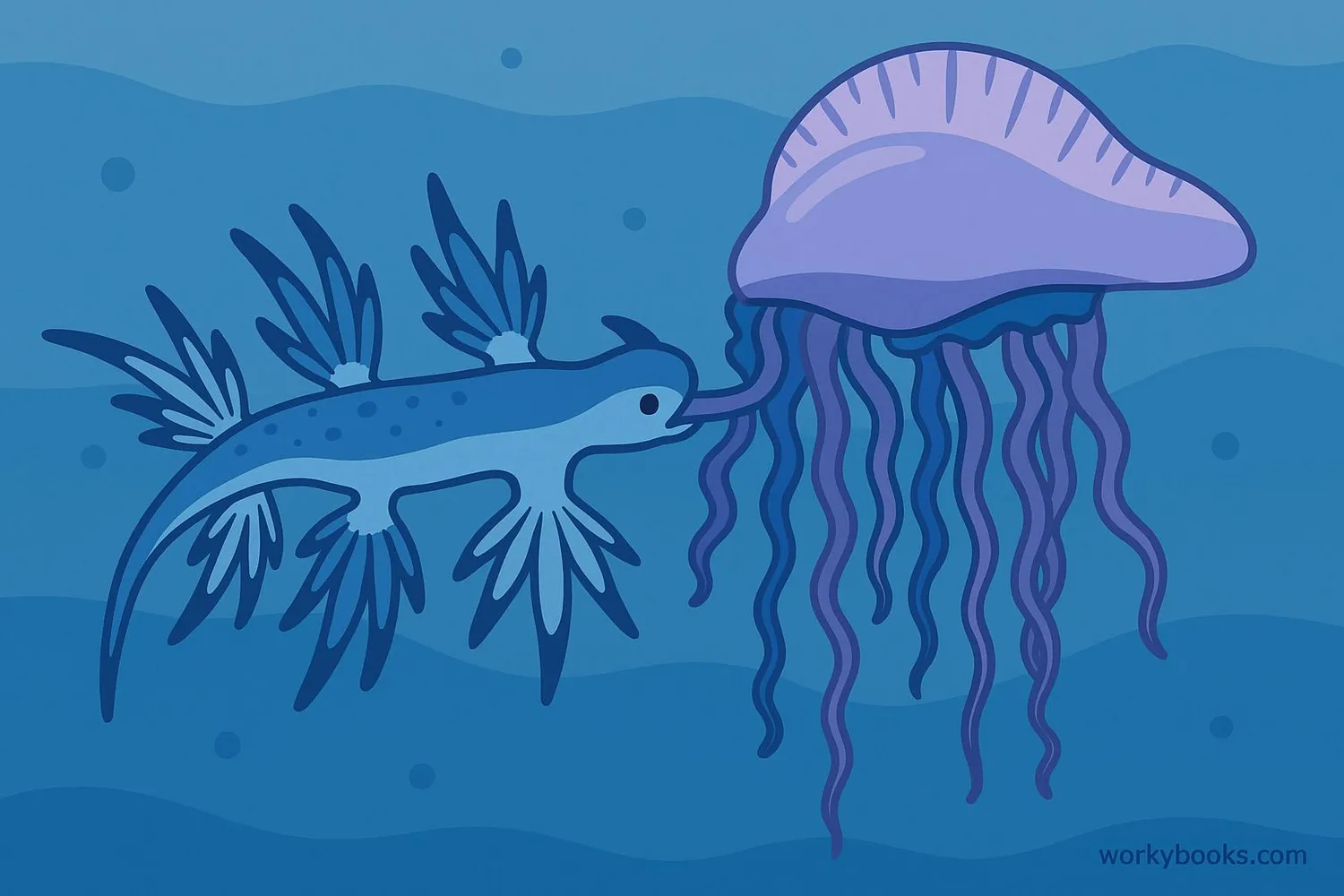
The blue dragon sea slug has a very specialized diet:
Favorite Food
Portuguese man o' war and other venomous siphonophores
Feeding Method
Uses radula (tooth-like structure) to consume tentacles
Special Ability
Immune to the venom of its prey
Blue dragons are carnivorous and feed primarily on venomous siphonophores like the Portuguese man o' war. They're immune to the stinging cells (nematocysts) in the tentacles of their prey.
Amazingly, blue dragons don't digest these stinging cells. Instead, they store them in special sacs at the tips of their finger-like appendages. This stored venom becomes part of the blue dragon's own defense system!
Defense Mechanisms
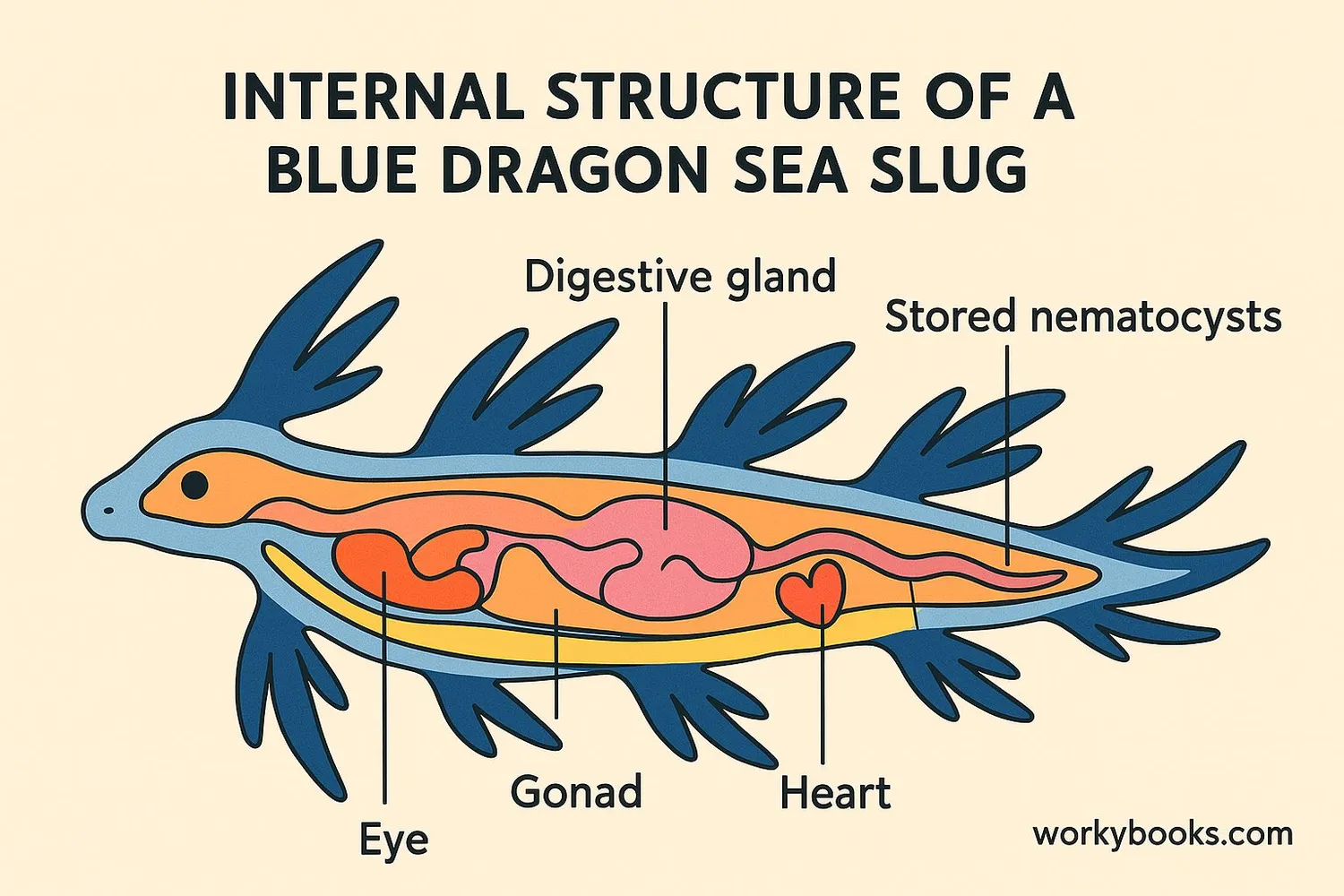
The blue dragon has several clever ways to protect itself:
Venom Storage
Stores stinging cells from its prey
Counter-shading
Blue and silver coloring for camouflage
Small Size
Hard for predators to spot in the open ocean
The blue dragon's most remarkable defense is its ability to store the venomous stinging cells (nematocysts) from the creatures it eats. These stinging cells are concentrated in their appendages, making their sting much more powerful than that of the Portuguese man o' war they feed on!
Because of this potent sting, blue dragons are considered more dangerous to humans than the Portuguese man o' war. If you ever see one washed up on shore, never touch it - their sting can be very painful!
Beach Safety!
If you find a blue dragon washed up on the beach, never touch it with bare hands. Even dead ones can still sting because their stored venom remains active!
Blue Dragon Sea Slug Quiz
Test your knowledge about the blue dragon sea slug with this quiz! Answer all 5 questions to see how much you've learned.
Frequently Asked Questions
Here are answers to some common questions about the blue dragon sea slug:
Fun Blue Dragon Trivia
Discover some amazing facts about the blue dragon sea slug!
Venom Powerhouse
Blue dragons can store venom from multiple Portuguese man o' war at once, making their sting more powerful than their prey's!
Upside Down Floaters
Blue dragons spend their entire lives floating upside down! Their blue side faces upward toward the sky, while their silver side faces down toward the ocean depths.
Egg Chains
Female blue dragons lay long strings of eggs on floating objects or even on their prey. These egg strings can contain thousands of eggs!
Climate Change Indicators
Scientists study blue dragon sightings as indicators of ocean health and climate change. More frequent beach strandings may signal changing ocean currents.


